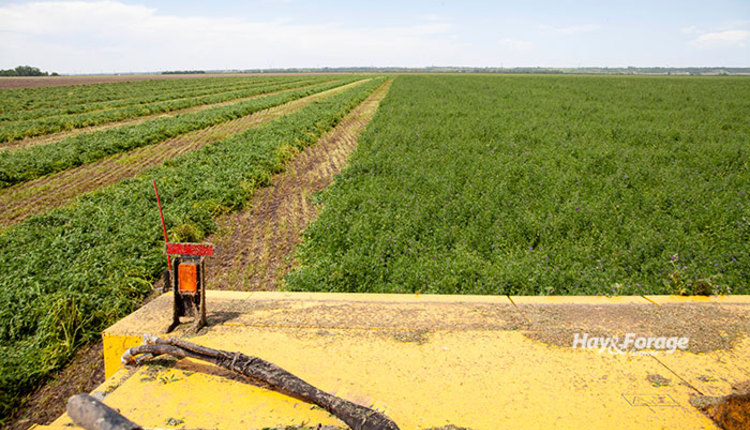
First cutting is just around the corner, and this initial harvest is an opportunity to target high forage quality and yield. However, making the wrong move may create consequences that can affect stands for the rest of the season.
Joe Lawrence, dairy forage systems specialist with Cornell University, says greater inclusion rates of high-quality forage in livestock diets can lower feed costs. He encourages farmers to prioritize first cutting over other operations and aim to cut forage at its peak fiber digestibility.
“Success culminates with putting planning into action when the crop tells you it is time to harvest,” Lawrence states. “It is critical to be prepared to harvest at the optimum timing, even when that means parking the corn planter or putting other tasks on the back burner for a few days.”
Start to finish
Before getting in the field, acknowledge the risks surrounding harvest. “The spring season on the farm is exciting, but also very busy, increasing the chances for accidents,” Lawrence asserts. “Work with your harvest team to identify and mitigate potential hazards and maintain balance between the critical time demands of this work and adequate breaks.”
When it comes time to cut, adjust machinery to an appropriate cut height. The ideal cut height for legumes is roughly 3 to 4 inches, whereas grasses require at least 4 inches of stubble. Lawrence suggests working with equipment representatives to ensure proper machinery setup. This will help reduce leaf loss and minimize ash content in the harvested crop.
Utilize wide swathing techniques to prevent dry matter losses from respiration. Then, store forage according to quality to meet the needs of animals in different stages of production. Allocate the highest quality forage to lactating dairy cows, as they will have the greatest nutrient demands.
“Once adequate inventories of lactating-quality forage are secured, attention can turn to forages for nonlactating animals,” Lawrence says.
Continue to manage forage while it is in storage to limit shrink loss. Shrink not only causes forage quantity to decline, but it can negatively affect forage quality and palatability as well. Furthermore, high input costs make shrink an even bigger threat to an operation’s expenses.
Another reason
Aside from improved forage quality, one benefit of an early first cutting is that more soil moisture is available for regrowth. Although wet conditions may sometimes delay first cutting, dry weather after a first cutting can negatively impact regrowth. The latter has become prevalent in Lawrence’s home state.
“In most areas of New York, three of the last five years have resulted in dry conditions following first cutting and persisting through July or longer,” Lawrence notes. “This weather pattern led to a notable impact on second cutting – and sometimes third cutting – performance.”
The dairy forage systems specialist recommends harvesting forage early when soil moisture is still generally sufficient. Doing so will give plants a strong start on regrowth and benefit overall production.

Amber Friedrichsen served as the 2021 Hay & Forage Grower editorial intern. She currently attends Iowa State University where she is majoring in agriculture and life sciences education-communications and agronomy. Friedrichsen grew up on her family’s diversified crop and livestock farm near Clinton, Iowa.

